Spring Garden Soil Elixir
Soil Elixir Jump-Starts Your Garden’s Soil
One of the most anticipated times of year for gardeners is Spring, with the attendant planting season. Everything is new and fresh, a chance to start over and improve on last year’s garden. A big subject for gardeners is what to do with the soil to prepare it for planting. If you have been reading our articles over the past several years, you know we advocate building the health and vitality of the soil in a natural, biologically safe manner. Soil becomes healthier, more productive, and disease, weed, and pest resistant. It results in an upward spiral where the garden gets better year after year.
Here is a unique recipe for a spring garden elixir that is easy to mix, completely non-toxic, and hugely beneficial for jump-starting your garden’s soil and getting it ready for planting. It comes courtesy of Crop Services International, which has over 35 years of experience helping growers accomplish their goals. They provide a Non-Toxic/Biological/Sustainable approach to growing food, from a full-scale commercial farm to the home gardener. We have read “The Non-Toxic Farming Handbook,” which they wrote to educate ourselves on improving our knowledge and approach.
This recipe is based on a 20′ x 50′ garden or 1000 sq. ft. Adjust for your garden size.
Before You Start
This recipe and applications assume an average garden soil that is basically good but could use some help.
It works in fertile soils by subtracting the lime or gypsum application, adding compost before spraying the elixir.
It helps very poor soils, but won’t give as much effect.
Preparing your garden beds for the elixir will require a couple of things.
First, evenly spread a 50 lb bag of high calcium lime (for acidic soils) or gypsum (for alkaline soils) across your beds. Your local garden center should have this. If using lime, it should be high calcium lime with as low magnesium as possible. 5% or less is great, up to 10% is acceptable, but nothing over 10%. The higher magnesium percentage releases excess nitrogen into your soil, greatly decreasing its fertility. It also overloads both the chemical and biological processes of your soil. Do not buy Dolomite lime, as it has too much magnesium.
Then, follow with 100 lbs of rich, aged compost, spread evenly across your beds, about 2 full-sized wheelbarrows. This can be purchased or from your own compost pile. Again, the best is made by you, and it is easy – “Compost – Nourishing Your Garden Soil” has all the details.
After doing both of these, make and apply the elixir.
Notes on Ingredients
- When purchasing the fish fertilizer, if you can find one with kelp or seaweed, even better. If you want the absolute best fish emulsion possible, brew your own! Read our “Best Homemade Fish Emulsion” for the recipe and instructions.
- Blackstrap molasses is best for its increased mineral content. Unsulphured is preferred but not absolutely necessary. One of the best sources of inexpensive molasses is a feed store that supplies horses, which can be bought by the gallon for much less than at a supermarket.
- Do not buy diet cola, as the Aspartame/NutriSweet used as the sweetener acts as a chelating agent, meaning it ties up the minerals and nutrients in the soil, making them unavailable to the plants. (It also does the same thing in your body!) The cola has Phosphorus to add to the mix along with sugars.
- The beer adds B vitamins – no, not vitamin Beer!
- The Borax powder adds Boron, one of the most important elements in the biochemical sequence of plant growth.
- Cranberry juice is full of vitamins and minerals, acts as an antibacterial agent, and has an acidic pH. Depending on how the juice is processed, it can also contain significant amino acids.
This recipe is based on a 20′ x 50′ garden or 1000 sq. ft. Adjust for your garden size.
- 20-24 oz liquid fish fertilizer Home-made is best
- 1/2 cup molasses Black strap has more nutrients
- 16 oz bottle of cola – NOT DIET!
- 24 oz beer 2 - 12 oz cans, any beer works
- 1/2 cup Borax powder
- 1 qt cranberry juice – make sure to get 100% cranberry juice, not a dilution
- Mix well with a stirrer and thin with enough water to enable mixture to be sprayed with a tank type or hose-end sprayer.
Apply the mix evenly over lime or gypsum and compost base with sprayer. If needed, go back over with second application to use up all of the batch, just make sure to apply evenly.
Broad-fork or lightly rototill garden soil. If using a rototiller, don’t go more than 2 inches deep at the maximum. Most of the biological growth happens at the 2-3 inch mark and the soil is turned over an inch or so beyond what the tines reach. Tilling deeper only destroys microbial life in the soil, setting you back in your efforts to create and build biologically active soil.
It must be noted that the sprayer cannot have been used to spray any chemical treatments like herbicides, pesticides, etc. as this will put those chemicals onto your soil, killing the microbial life in the soil and feeding the chemicals to the plants, where you wind up eating them!
Seed Planting Elixir
Once you have applied the elixir and broad-forked or lightly tilled the soil, prepare your garden planning and seedlings. We have another planting elixir to use just after planting the seeds and transplanting the seedlings into the garden that we’ll share with you: In a gallon milk jug, mix 1/2 cup of fish emulsion, 1 tsp sugar (preferably raw or brown), and 1/2 cup of cola. Fill the jug with water and shake well. Apply the mixture over the seeds and transplants. Each gallon will treat approximately a 50-foot row.
This is a great start towards sustainable, biological agriculture in your own garden. Remember, though, it is just a start, a good step in the right direction. To continue to make progress in knowledge and soil health, you need to find out where you are starting from. Do more reading, ask questions, and get a complete soil analysis, not just the widely offered NPK and pH soil tests. Spend the money to find out exactly where your garden soil is, and then you can make sound decisions on where you want and need to go. Then you won’t be guessing and shooting in the dark, trying to do what is right but not really knowing if you are making positive progress.

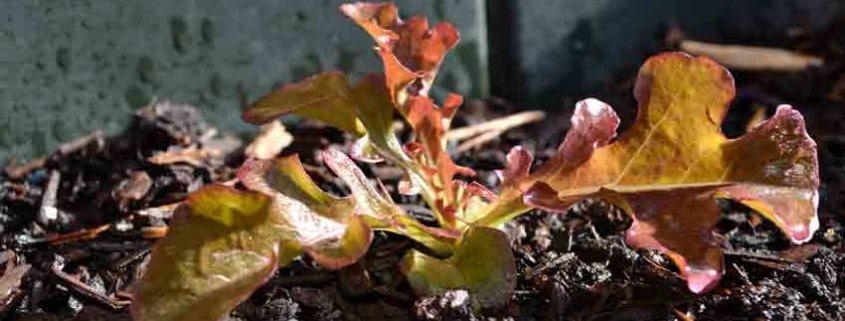
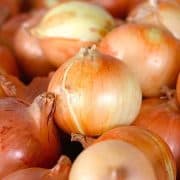
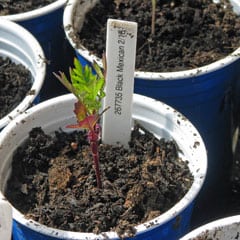

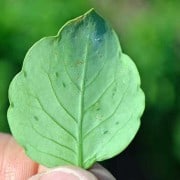
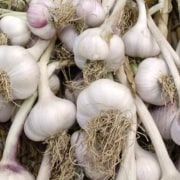


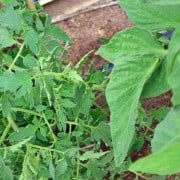
Do you mean the Borax that you can find in supermarkets or a different kind?
Hello Ghislaine-
Yes, 20 Mule Team Borax is what you are looking for.
Great! Thank you, Stephen. I’ll try that.
I got a bit confused. It is the second list of ingredients that covers 1,000 sq ft, right? And the 50# of lime and 100# of compost are for that much area as well? Thanks for the fun recipe! (Though I never thought of Coke as non-toxic before!)
What does the cranberry juice contribute to the soil?
Hello Claudia-
cranberry juice is full of vitamins and minerals, as well as acting as an anti-bacterial agent and having an acidic pH. Depending on how the juice is processed, it can contain significant amino acids as well.
Hello Jill-
Yes, the second list is the recipe, the first list is the list of what to buy for the garden to help this year’s production and growth.
Coke or commercial colas are good for helping to start the soil building process, as well as an acid wash to clean greasy, grimy auto parts and baked on grease in kitchen pots and pans. Just soak them for a few hours and the parts will come out shiny clean! Scary to think that is the same acid that many folks drink!
Thank you for the recipe! Will give it a try this year. I have already worked the soil and added bone meal. Would adding this, be an overkill? Thank you!
Hello Inna-
Bone meal is a good slow-release source for calcium and phosphorus, with some nitrogen value. Depending on how much bone meal you have applied, you might cut the amount of lime in half or less. I would use the rest of the recipe to give the garden a great jump-start.
Do you have a spring elixir for North Florida gardening. Our soil tends to be 6.5 ish ph and, of course, sandy.
Thanks.
Hello Kat-
This is a great elixer for getting a sandy soil ready for a great season. Just follow it using the lime instead of gypsum. The lime is alkaline and will raise the pH while getting the calcium into the soil and available for the plants. You might want to add a bit more than the 100 lbs of compost for the 1000 sq. ft garden to boost the nutrient holding capacity of your sandy soil.
Thanks for the recipe! I just mixed up a batch today. Do I have to wait 2 to 4 weeks to plant?
Hello Madelyn-
I would wait the 2 weeks if possible, but 1 week will probably give enough time to get things energized and started back to life in the soil. Remember that you can always re-apply the mixture once a month when the garden is really growing, just leave out the Borax, as it is only needed once at the beginning of the season.
Let me know how it works!
Wow wish I saw this before I planted my garden. I have above ground garden and loaded it with mushroom soil last year and had plants and tomatoes ,and green peppers that looked like they had been on steroids never before such high peppers and tomatoes. This year tilled it up with lime and peat moss and miracle grow soil about 3 50 lbs. Bags which were a lot. I hope it’s enough for this year. My question is any hints for cantaloupe an water melon I never have good luck with them. I am in North West Virginia.
Thanks Connie! We hope that it helps you this year. During the height of the growing season, a good application is 1/4 to 1/2 cup of blackstrap molasses, 2 cups of milk mixed into a gallon of water and give each plant a drink. The sugars help keep flowering and fruiting in high gear, along with feeding the soil microbes to keep the nutrients flowing.
Watermelon and cantaloupe like hot days and cooler nights, along with a limestone base in the soil. Some folks use newspaper under each melon to help prevent ground rot of the fruit.
We recently moved to GA. I have a few earth boxes for my garden but would like to also add an area for square foot gardening. I have a small area. Our soil is clay so I will need to add new soil. Any help on what I should buy would be greatly appreciated.
Julie, take a look at our “Building Great Soil” section for more in-depth advice on how to build some really healthy soil. This will help you in the long term on converting the clay into a rich fertile soil. IN the meantime for a small section or for container gardening, we’ve had good experience with and recommend Mel Bartholemew’s Square Foot Gardening Soil that comes in a bag and can be bought at most Home Depot or Lowe’s garden centers, and better-stocked garden centers. It has soil, compost, mycorrhizal fungi along with other goodies to help the vegetables grow, without chemical fertilizers.
This article is awesome! I have been trying to figure out how I could organically build up my soil this spring. This seems like a great start! Thanks again for helpful information on organic gardening! Where would you recommend getting a soil test done?
Melissa, either Crop Services Int’l or Texas Plant and Soil Lab. There are a number of other, equally great soil labs out there, I recommend these two because they know and understand home gardener’s needs as well as full scale farmer’s.
Thanks for the kind words!
I thought regular pasteurized American beer is lacking the B-vitamins that non-pasteurized beer had, such as in German beer. Am I wrong?
Marilyn, you are correct that mass-produced beer has been pasteurized and has lost much of the B vitamins that unfiltered, unpasteurized beers from craft breweries produce, but will still have some nutrients left. It is best to use home-brewed or craft-brewed beer for the best results.
I have also heard about adding pepper seed to a molasses mix for the garden, but I am unable to find information on the benifits. Have you had any experience with this or know of the reasoning?
I know that the capsaicin in hot peppers are great against unwanted bugs, but don’t know of the benefits to soil. I suspect that it would have much the same effects on the soil microbes, so would want to thoroughly test it in a small spot in the garden before using it on the entire area.
Stephen, I loved your recipes for the molasses and milk treatment and am looking forward to trying your Spring Elixir as well. I was so pleased to see that you avoid typical pesticides that might hurt us and the environment! It makes me want to read everything you’ve written! I have 2 wonderful Labs, who like to nibble on things now and then, so that’s another reason I like to avoid the bad stuff.
Thank you.
Aimee Sprogis
Thank you so much for the kind words Aimee, Cindy and I really appreciate them!
Great article. I can’t wait to try this elixir this spring.
You are welcome JW, please let us know how it works for you!
Hey Stephen, your garden elixir is practically the same that I use in my compost tea. This is a terrific formula and it works wonders for the plants. I also use powdered mycorrhizal fungi placed into the bottom of the seedling hole when transplanting.
Thanks Paul! It’s interesting to see how this approach is used in different directions.